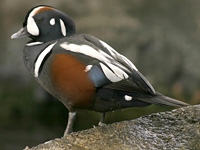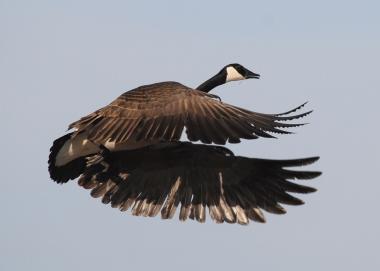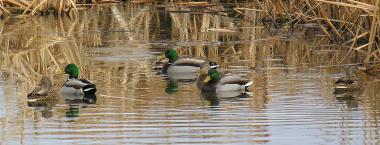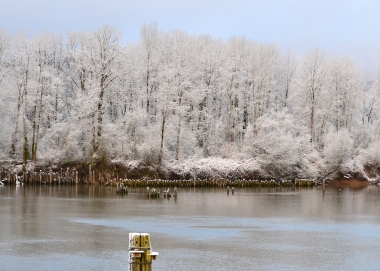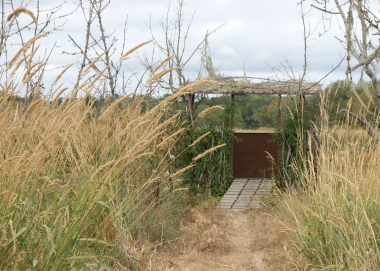

2018 western Oregon waterfowl forecast
What to expect when waterfowl hunting this year in the western part of the state.
Contents
Statewide outlook
Eastern Oregon upland game bird forecast
Eastern Oregon waterfowl forecast
Western Oregon upland game bird forecast
Western Oregon waterfowl forecast
Coos County
Ducks will begin moving into the county early in the fall and initially concentrate in coastal bays and other large water bodies. A large portion of Coos Bay is open to hunting even though some of it is within the city limits of Coos Bay. Other areas within the city limits of Coos Bay and all areas within city limits of North Bend are closed to hunting. There is also an area near the Southwest Oregon Regional Airport in North Bend that is closed to hunting. Hunters are encouraged to contact the ODFW Charleston Field Office (541) 888-5515 to obtain the latest information on areas open for hunting.
The Coquille Valley Wildlife Area is closed to public access due to habitat restoration efforts on the Winter Lake tract. However, ODFW anticipates reopening to all public access before the opener of waterfowl season. Please contact the ODFW Charleston Field Office (541) 888-5515 for the latest information on access to wildlife area.
Also, the Ni’Les-tun Unit of the Bandon Marsh National Wildlife Refuge near Bandon will have an area within it open for waterfowl hunting. Other portions of Bandon Marsh National Wildlife Refuge that have been open for hunting in the past continue to be open this year as well. As winter comes on and the rainy season starts, waterfowl will disperse inland to flooded river valleys like the Coquille.
Geese will concentrate on private pastures around river valleys. Canada goose populations have been growing over the past few years. Good goose hunting can be found in most of the county. The key to a successful hunt is prior scouting for areas where geese are going to feed or rest.
Douglas County
Nearly all waterfowl hunting in the Umpqua Valley is on private property and hunters are reminded to get landowner permission before hunting. Many agricultural landowners along the valley floor are seeing significant damage to fields from increases in Canada goose populations over the recent years. Many landowners and managers have been welcoming hunters to help them reduce this damage. Plat-I Reservoir, Ben Irving Reservoir and Galesville Reservoir have areas set aside for hunting waterfowl. Hunters need to be familiar with Douglas County and Sutherlin Water Control District regulations for access times and watercraft use on these reservoirs. The Umpqua River and its tributaries also offer great waterfowl hunting in the Umpqua Valley.
Jackson, Josephine and Curry counties
Hunting success will depend on local weather and water conditions, and on weather conditions to the north. Storm systems in northern Oregon and Washington push birds south to our area. Waterfowl hunting on the Denman Wildlife Area is usually best during December and January.
Local Canada geese should be very abundant for the September goose season and throughout the general season. The Rogue River is a good place to hunt during the September goose season as well as on the Hall Tract of the Denman Wildlife Area.
The Denman Wildlife Area is dependent on rain to flood fields, and hunters can call 541-826-8774 to check on the status of flooding. Hunters should remember that after Nov. 1 the Hall Tract of the DWA is only open on Saturdays, Sundays, Wednesdays, Thanksgiving Day and Christmas Day. The Military Slough and Modoc Units are open all days of the general season.
North and Mid-Coast (Clatsop, Tillamook and Lincoln counties)
Early duck hunting should be fair to good on coastal bays. A mix of ducks (mainly wigeon, pintails, mallards and divers) should be available in larger north and mid-coast estuaries, such as the lower Columbia River and Tillamook, Nestucca, Nehalem, Siletz, Alsea, and Siuslaw Bays. In recent years, the numbers of ducks on these estuaries tends to be greater earlier in the season, with numbers diminishing by December. However, numbers and distribution can change on a yearly basis and success can be good in these areas into January. With the onset of storms comes the best waterfowl hunting on the coast. Stormy weather moves birds off the bays and into more sheltered waters where they can be hunted more effectively. However, when there is too much rain, birds move into agricultural areas where hunting cover tends to be limited or nonexistent. Another excellent time to hunt the coast is during cold spells when some inland waters are ice-covered.
Goose hunters, do not forget to purchase your annual NW goose permit. Goose hunting should be good all along the north coast during the September goose season as production of local geese (westerns) is usually good. Migratory geese also be available in high numbers for hunters during the traditional NW Permit Goose seasons. On the mid-coast, opportunities for goose hunting are limited to the estuaries or private agricultural land.
North Willamette (Multnomah, Washington, Clackamas, Columbia, Yamhill and Marion counties)
Waterfowl hunters should expect a good hunting season this year. Resident mallards will continue to provide the majority of the early-season hunting opportunities along the Willamette River and in local ponds, wetlands and lakes. Late-season hunting is expected to be good for ducks and geese when cold winter weather brings northern migrants into the state.
Goose hunting opportunities in the northern Willamette Valley and lower Columbia River should also be good this season. Hunters can expect good numbers of local Canada geese to be present during the early September goose season. For a successful September season, hunters need to be out scouting for feeding and loafing areas that concentrate geese. When a feeding flock is found, wait until the birds fly back to roost before going into the field to pinpoint the feeding area via fresh droppings. Hunters will also need to secure permission to hunt on private lands where most of the geese can be found. Hunters participating in the Northwest Permit Zone hunt should also find very good numbers of geese available as migrating birds move into the area.
Finding locations to hunt is difficult without access to private lands. Hunters without this access should explore opportunities to hunt waterfowl along the Willamette and Columbia rivers. Multiple hunting opportunities along the Willamette River can be located in the Oregon State Parks and Oregon State Marine Board’s Willamette River Recreation Guide. The majority of these sites are only accessible by boat but there are several locations that can be reached from local roadways. Hunters are reminded to review the Oregon Department of State Lands website for information concerning the use of Oregon’s waterways and the land underlying and adjacent to them. Additional information concerning waterfowl hunting can be found in the State and Federal Refuge Areas Regulations in the Oregon Game Bird Regulations.
Sauvie Island Wildlife Area
Waterfowl hunting on Sauvie Island Wildlife Area should be about average this year with waterfowl populations at a relatively high level. The best hunting is usually during colder weather when birds are pushed south from Alaska and Canada. The wildlife area’s crop production was slightly down this year due to a very dry summer. All hunt units will have some flooded areas on opening day of general waterfowl season. Ongoing work on wetland and food resources on the wildlife area will continue to improve hunting in future years. The Northwest Permit Goose Season will be open this year on the Wildlife Area, but only for white geese (Ross and snow). Dark goose hunting will remain closed on Sauvie Island Wildlife Area except for the September season.
If you are new to waterfowl hunting on Sauvie Island, see our Beginners Guide to Waterfowl Hunting on Sauvie Island.
Special youth waterfowl hunts for hunters age 17 and younger Oct. 21, Nov. 10, Dec. 2 and 26 and Jan. 13. See the Game Bird Regulations for details.
South Willamette (Marion, Polk, Linn, Lane and Benton counties)
Prospects for waterfowl hunting will be good if the district sees some rain to flood feeding areas when the birds come down from the north. Canada goose populations observed annually in the fall in Alaska have declined for the third consecutive year but large number of cackling and other Canada geese are still expected to provide excellent hunting. The Willamette River offers good duck hunting for those with the proper boat. Goose hunting occurs throughout the valley but hunters will want to obtain permission to hunt private lands or hunt properties enrolled in the Open Field Program that allow access for goose hunting. A map of those properties can be found at www.OregonHuntingMap.com or at the ODFW website.
Fern Ridge Wildlife Area
All wildlife area pump stations are directly related to the water levels in Fern Ridge Lake and could be adversely affected by the end of summer and into the fall. Early season field flooding may be limited and hunters should expect dry hunting areas at the beginning of duck season, specifically in the reservation hunt area on the East and West Coyote units. With the expectation of pump stations being dry by late September, the reliance on fall/winter rains will be critical. Later season hunting is expected to be more productive as fields naturally flood. Royal Amazon unit and the Northwest end of the Fisher Butte unit might be a productive hunting area early in the season.
An infrastructure improvement project is being conducted in the East Coyote Unit with an expected completion date of September 28. Parking lots on Cantrell and Ken Neilson roads will be used store rock for the project. Hunters participating in the Western Oregon Fee Pheasant Hunt or September goose hunts are asked to leave plenty of space for construction equipment to access this rock. Hunters may have to park along the county road while hunting.
Please contact FRWA headquarters at 541-935-2591 for more details and other information.
EE Wilson Wildlife Area
The wildlife area can be productive for duck hunting later in the season, as winter rains fill wildlife area ponds. In October, the area has little water available for duck hunting and disturbance from the fee pheasant hunt likely reduces waterfowl use of the available wetlands.
Waterfowl hunting locations
Sauvie Island (Portland), EE Wilson (Monmouth), Denman Wildlife Area (near Central Point) and Fern Ridge (Eugene) wildlife areas offer bird hunting. On the North Coast you can hunt around estuaries on the coast and in the lower Columbia River; call ODFW’s Tillamook Office for more information or try ODF for a map that shows public and private lands. The Willamette River has some decoy and drifting opportunities; see the Oregon Department of State Lands website.

